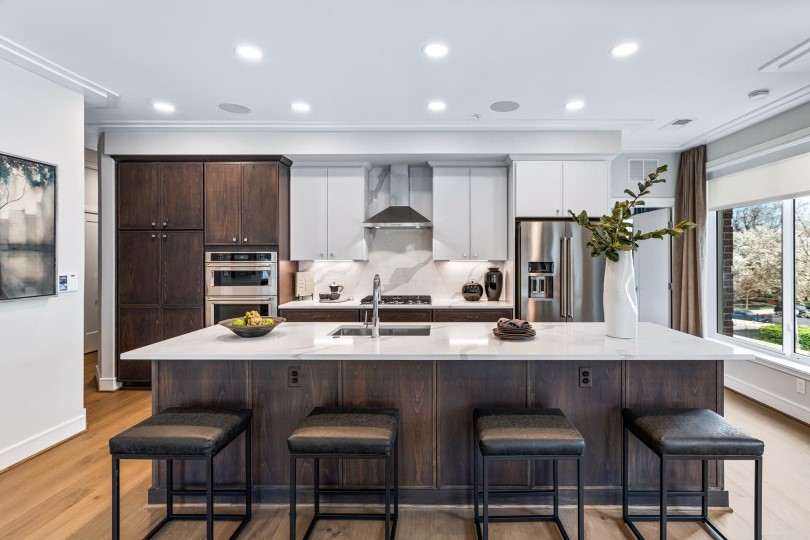Smart Saving Strategies: A Roadmap to Your First Home

Saving for your first home requires a strategic approach, and we’ve put together a collection of tried-and-true tips to help you build the financial foundation you need to fulfill your dream of homeownership.
From budgeting hacks and income-boosting strategies to leveraging available assistance programs, this blog will provide actionable insights to help you turn your dream into a reality.
1. Set a Clear Savings Goal and Start Now
Saving the money you’ll need to buy a house takes time (it’s a marathon, not a sprint), so it’s never too early to start. Whether your goal is to own a home in two years or ten, if it’s something you want at any point, don’t wait to start saving.
Start by setting a clear and realistic goal. Think about the type of home you want and put numbers to your dream. Ask yourself: What kind of home am I looking to buy? Where do I want to live? How many bedrooms and bathrooms work for my household? A five-bedroom house will have a different savings plan than a two-bedroom condo.
You’ll also need to determine how much money you’ll need for your down payment and other homebuying expenses, such as closing costs, property taxes, and homeowners insurance. For additional help, read our blog, How Much Home Can You Afford.

2. Be Aware of Your Spending and Create a Budget
It can take a lot of work change your spending habits. Tell your friends and family about your homeownership goal if you need some accountability. They can help keep you (and your spending!) in line. You can also put visible reminders to help thwart any impulse spending. A picture of your dream home taped to your computer may help you rethink your purchase before clicking “add to cart.”
Assess Your Current Financial Situation
Before you can reach your end goal, you need to know where you’re starting from. Begin by evaluating your current income from all sources, whether it’s your primary job, side gigs, or any other avenues of earning you may have.
Itemize and Track Your Expenses
Once you know what money you have coming in, you need to calculate what money is going out. Review your bank and credit card statements to determine where you typically spend money.
Categorize them into fixed expenses (like rent, insurance, or your car payment) and variable costs (such as groceries, dining out, and entertainment), and look for areas where you can cut back.
Using a budgeting tool like Mint can help automate the process by pulling information directly from your financial institutions and categorizing your spending into an easy-to-read graph.
Cut Costs and Stretch Your Budget
Once you’ve familiarized yourself with your spending, it’s easier to identify areas where you can cut unnecessary spending. We’re not saying you have to give up your morning coffee shop stop completely, but cutting back on your visits can add up over time. You want to be smart with your budget without completely sacrificing your quality of life.
Look for ways to reduce costs on your expenses, like buying generic brands at the grocery store, cutting out your impulse purchases, and reducing how often you order takeout for dinner.
If you can, try to find ways to increase the money coming in. If it’s time for your performance review, seize the opportunity to ask for a raise. Pick up a side hustle to supplement your income if your schedule allows it. Use your photography skills to freelance, make some furry friends by pet-sitting, and instead of being the one ordering food, you can be the one delivering it.
Sell unused items, like clothes you won’t wear again or the air fryer that was all the rage and you “had to have” (but never gets used anymore). You can make easy money selling the things you no longer use or need, and you won’t even miss them.

Condo Collection, Towngate North Community, Fairfax, Virginia
Give Yourself a Timeline
When do you want to achieve your goal of homeownership? Two years? Five? Ten? Research the average sales price of the type of home you’d like to have in the area where you want to live to help estimate a realistic purchase price.
Calculate the amount you would need for a 20% down payment and divide that amount by the number of months between today and when you want to buy a home. This will give you a ballpark of how much you would need to save each month to reach your goal. Decide if your timeline is feasible and what adjustments you need to make to meet it. Naturally, the shorter your timeline is, the higher your monthly savings goal will be.
Automate Your Savings
Set up automatic transfers or have your employer directly deposit part of your paycheck to your savings account each month. Treat your savings like a non-negotiable expense, so you’re not tempted to spend it. Keeping your spending money separate from your savings helps reduce the temptation to use it. Like they say, “out of sight, out of mind.”
Add to Your Account Whenever Possible
Grandma still sends you a check for your birthday? Add it to your savings. Your company gave you an annual bonus? Add it to your savings. That nice tax refund you’re getting? Add it to your savings. Any time you can contribute extra money to your goal, you fast-forward the process of saving and can potentially chop a month or more off your homebuying timeframe.

3. Educate Yourself
Knowledge is power, and the more you know about the financial aspect of homeownership, the better off you’ll be.
Know Your Credit Score
Your credit score greatly impacts your purchasing power, so you need to take an in-depth look at your credit situation. You need to be fiscally fit if you want to buy a house. If you don’t have the best credit, check out our blogs on How to Fix Your Credit to Buy a House and How to Buy a House with Bad Credit.
Review your credit report for errors, pay down any outstanding balances, and make your payments on time. Lenders need to know you have a history of being responsible for your debts.
Learn About Your Financing Options
First-time homebuyers often have access to various financing options and assistance programs to make homeownership more attainable. These programs can provide financial support, down payment assistance, or favorable mortgage terms.
Keep in mind that these programs may vary by location, and eligibility criteria may apply. Consulting with a mortgage expert can provide valuable guidance tailored to your specific situation.

Robson 24 Floor Plan, Front Garage Collection, Chinook Gate Community, Airdrie, Alberta
Know What You Qualify For
Even if your goal of owning a home is a few years away, you can still work with a trusted mortgage expert to figure out what you qualify for at this time and what you’ll need to do to be eligible for your dream home in the future.
One of the first things lenders look for when considering you as a mortgage candidate is your debt-to-income ratio (DTI). The more debt you have, the less favorable you are as a candidate.
While it may sound counterintuitive to pay money towards your debt to help you save, once those debts are paid off, you’ll have hundreds (if not thousands) of dollars freed up to help you save faster. A mortgage lender can help you understand your DTI as of today and what ratio you need to have in the future.
Know the True Cost of Homebuying
The down payment isn’t the only expense you need to save for before buying a home. Fortunately, the other costs aren’t as high and shouldn’t require much more time for you to save for them.
You’ll need to account for closing costs – expenses like loan origination fees, credit reports, underwriting fees, the appraisal, and escrow and title fees. You’ll also have to pay property taxes and homeowner’s insurance.
If your new home has an HOA, you’ll be responsible for upfront dues and document fees. Check out our blog on additional costs you may face when buying a home for other expenses you’ll want to consider.

4. Monitor Your Progress and Adjust as Needed
Regularly reviewing your savings progress is crucial in ensuring you stay on track toward your goal of saving for your first home. This can be a monthly or quarterly check-in where you assess if you’re meeting your savings targets. Compare your actual savings against your plan to identify any discrepancies and make adjustments as needed.
If there are any changes in your financial situation, like a salary increase or unexpected expenses like a major car repair, adjust your goals to reflect the circumstances. If you need to reevaluate your timeline, give yourself the grace and flexibility to do so. Reaching your goal sustainably is more important than rushing the process.
5. Stay Informed About Market Conditions
In the ever-changing world of real estate, you need to be well-versed in the local market conditions. Keep an eye on trends in the area where you’d like to purchase a home. Watch the availability of homes, time on the market, and differences between the asking price and what homes sell for.
Stay informed on current mortgage rates and be aware of any potential changes. Mortgage interest rates can significantly impact the overall cost of homeownership as a lower rate can translate into significant long-term savings.

Indigo at Canvas Park Collection, New Haven Community, Ontario Ranch, California
Remember, saving for a home takes time and discipline. Be patient and stay focused on your goal; over time, you’ll be closer to achieving your dream of homeownership.
Let us help you find your new home! Explore where we build and connect with our sales team when you’re ready to learn more. We’ll be expecting you!
